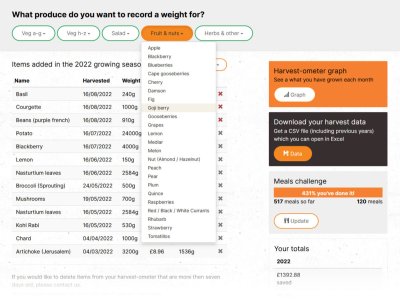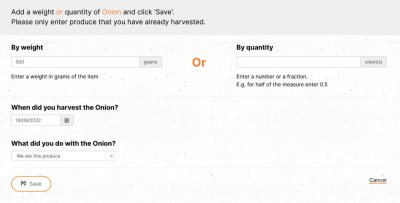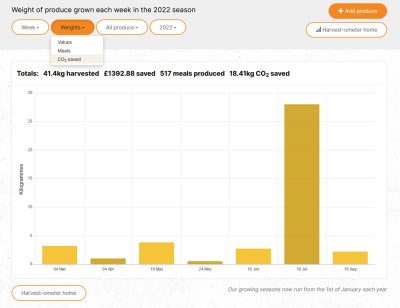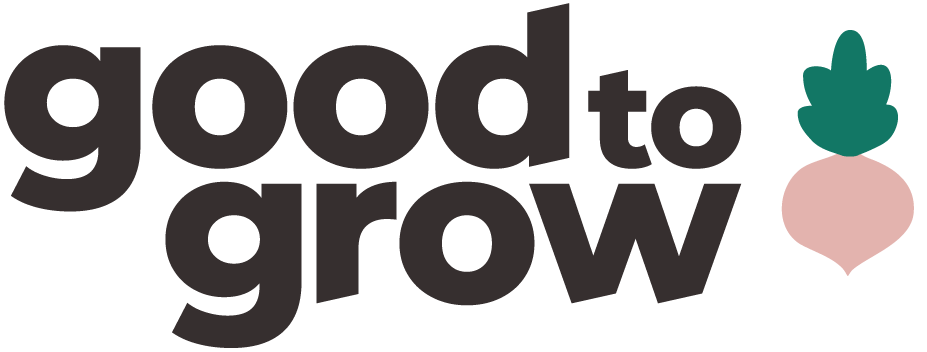Harvest-ometer
This simple online tool helps growers keep track of how much food they grow, how much money they save, and how much carbon they save compared to buying produce from the supermarket.
The Harvest-ometer stores your yield data and converts it into a money value, meal value, carbon value, and makes great graphs that you can show friends, family, supporters or even funders!
Reasons to use the harvest-ometer
- To see how much you and your volunteers can grow.
- To include in funding applications or on your website.
- Because good gardeners keep records to improve yields (see Sustain Grow More Food publication).
- To help us show policy-makers that growing food has a high value.
How does it work?
- Register your garden with Good to Grow
- Weigh and record your harvest
- Log in to your dashboard
- Open the Harvest-ometer
- Select a produce type and enter its weight or quantity
- View your harvest record and see its value
- Check progress on your graphs or export the data
Screenshots from the Harvest-ometer
The picture below shows a table of existing items entered into the Harvest-ometer, and the user adding some produce. Also shown on the right are the totals for this and previous years if available, along with the option to export harvest data or view a graph of the data.

This image shows 500 grams of harvested onion being recorded. The weight of the harvest can be entered in grams or by quantity (per onion).

And finally this image shows the Harvest-ometer graph, and the option to view your harvest in terms of meals, or in terms of how much carbon the garden has saved, compared to if the same produce was bought from the supermarket. You can also show data from previous growing seasons and filter by type of produce.

Register your garden Login to your dashboard
How was it developed?
The Harvest-ometer was developed by the Capital Growth network in London. To find out more read our Reaping Rewards publication or visit the Capital Growth website. The carbon calculations were carried out by Sow the City and their methodology can be found here.


